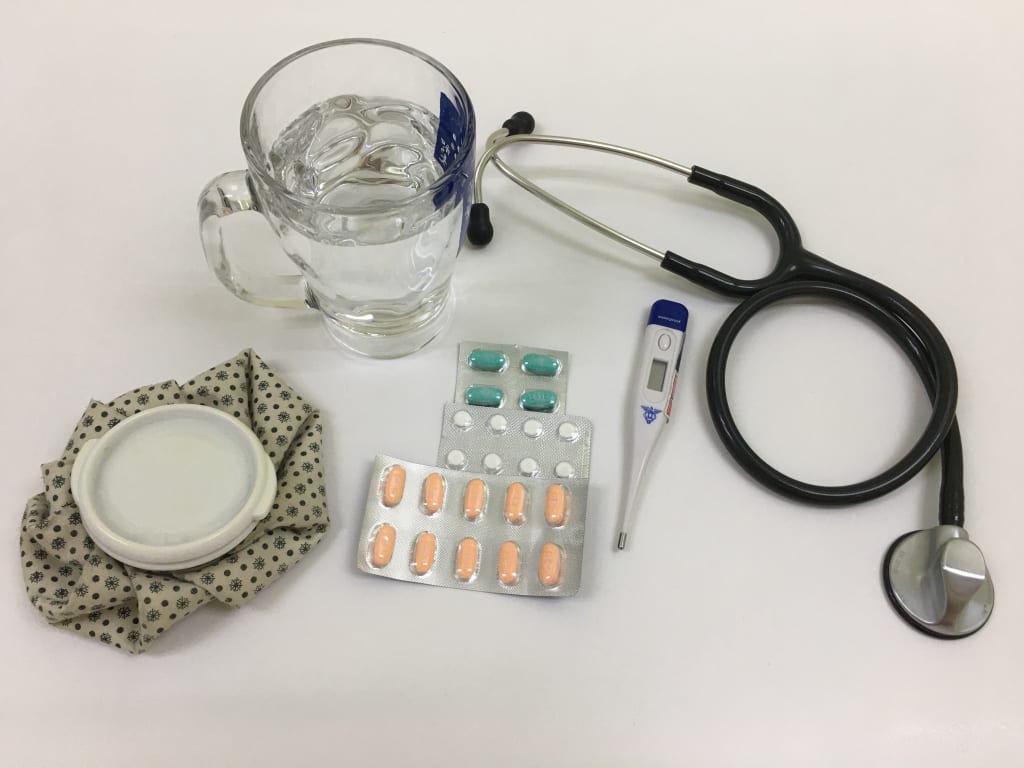
A new medication called pleconaril, intended to treat the common cold, underwent clinical trials in 2000 at the hands of ViroPharma. The pill worked for many patients. But in 7 of them, after just a few days of treatment, scientists discovered mutated virus variants that were almost entirely resistant to pleconaril. Although viruses are constantly evolving, this one did so quickly that it was able to outwit years of study and development in a matter of days. Without an immune system, a cold would quickly spread deep inside of your lungs if you had one. When the lungs couldn't give your body enough oxygen and you asphyxiated, rabid viral replication would continue to destroy tissue there. This risk exists for millions of people worldwide who take immunosuppressant medications or who have a compromised immune system because "minor" infections can develop into serious or even fatal conditions.
However, if you're fortunate enough to have a healthy immune system, a cold will likely only cause you to experience a few minor symptoms. Over the course of their lives, adults typically contract more than 150 colds. And even though the symptoms are similar, the underlying cause may vary from case to case. At least eight different virus families, each of which can have its own species and subtypes, are responsible for causing the common cold. There are only a few ways that viruses can enter our bodies; one of them is through breathing, which explains how so many different viruses can result in the same illness. As a result of our immune system's numerous frontline defenses—which are actually what cause many cold symptoms—being set up in order to allow us to breathe. Your immune system traps and removes viruses through your mucus-filled, runny nose. Your immune system raises your body temperature during a fever to impede viral replication. Your immune system's recruitment of its white blood cell army to help kill the virus results in your body becoming inflamed, which causes your blood vessels to enlarge. One fact works in our favor: rhinoviruses, which account for between 30 and 50 percent of all cold-causing viruses, are the most common cause of the common cold. The common cold would be largely cured if we could get rid of all rhinovirus infections.
The two main methods for combating viruses are vaccinations and antiviral medications. A rhinovirus vaccine was initially developed; however, it was only partially successful. In 1957, William Price vaccinated 50 children with inactivated rhinovirus and gave 50 others a placebo. A rhinovirus outbreak quickly spread among the children after that. There were only 3 sick people among the vaccine group. Only 23 people—nearly 8 times as many—in the placebo group—did. The immune systems of children who had received vaccinations were successfully recognizing and reacting to rhinovirus, which was encouraging despite the small numbers. However, later vaccine trials revealed absolutely no protection at all. No one at the time knew that the rhinovirus had different subtypes, so this wasn't Price's fault. Price's vaccine was only effective against one or possibly a few rhinovirus subtypes out of 169 subtypes and counting, which is why it didn't offer broad protection for reasons we don't fully understand. We occasionally have luck when creating vaccines. For instance, the mRNA COVID vaccines effectively shield us from both the original virus and its variants as well as serious illness and death. However, we have yet to develop a vaccine that can effectively protect against rhinovirus or any other virus that is responsible for the common cold. Regarding antiviral medications, it is challenging to create a molecule that is toxic to the virus without also being toxic to humans because viruses use the cellular machinery of humans to replicate and spread. And even if you succeed in doing so, the virus might evolve so that the medication is no longer effective. Viruses are sly creatures.
However, we have achieved some remarkable successes, such as the eradication of smallpox due to a potent vaccine, inability of the disease to hide in other species, and low mutation rate. On the other hand, HIV mutates so quickly that, in a person who is not receiving treatment, theoretically every single single-letter mutation in the virus's genetic code could be created in a single day. The lack of a vaccine persists despite decades of effort. However, we do have a potent combination of HIV medications that the virus cannot easily adapt to. Sadly, we are currently confined to having colds. However, in the last few decades, there have been some completely game-changing medical advancements, such as mRNA vaccines and CRISPR. Due to its origins as an immune system defense against viruses in bacteria, CRISPR holds particular promise as a potential antiviral agent. In fact, early in the COVID-19 pandemic, a research team demonstrated that a CRISPR system could destroy coronavirus and influenza genomes in our lung cells. They named their system prophylactic antiviral CRISPR in human cells. or simply PAC-MAN.






Comments
There are no comments for this story
Be the first to respond and start the conversation.